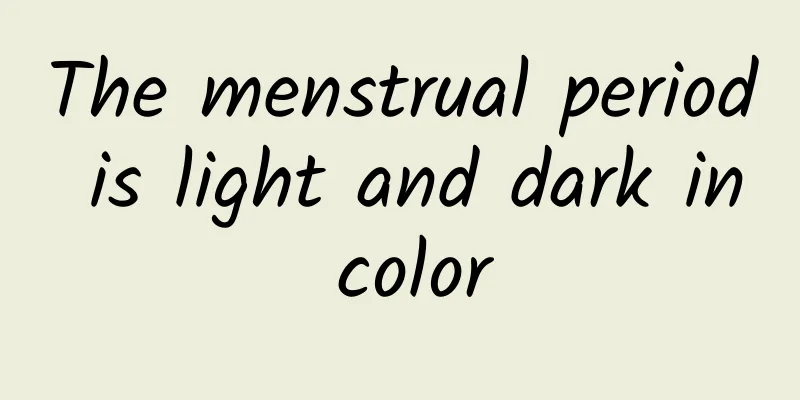Fallopian tube reflexology area

|
We all know that there are many acupuncture points on the soles of the feet. So when a pedicurist gives us a massage, if we have a strong reaction, the pedicurist will tell us where the problem is based on the acupuncture points being massaged, which will cause such pain. This is because the acupuncture points on the soles of the feet can control the whole body, just like the fallopian tubes of women also have reflections on the soles of the feet. So where is the reflex area of the fallopian tubes? Foot massage is a physical therapy in the category of external treatment in Traditional Chinese Medicine, and has been proven to be one of the effective methods by countless clinical practices. Foot massage is a treatment that mainly relies on the strength and direction of the technique. Due to the different strengths of the techniques, the strength of their penetration into the body also varies. Basically, they are divided into shallow (skin and hair), slightly shallow (meridians), medium (muscles), slightly deep (tendons), and deep (bone marrow). The arrangement of the foot reflex zones is regular and basically consistent with the gross anatomical parts of the human body. It is arranged precisely in the order of up and down, left and right, front and back according to the actual position of the human body. Put your feet together, like a projection of a person sitting cross-legged and leaning forward, seen from above and behind: The big toe of the foot is shaped like a human head. The big toe and other toes are equivalent to the reflex areas of the head, neck and face, which contain the reflex areas of the brain, cerebellum, pituitary gland, trigeminal nerve, eyes, ears, nose, tongue, mouth and teeth. The upper part of the sole is equivalent to the human chest cavity (with lungs and heart), which contains the reflex areas of the lungs, trachea, heart, thyroid gland, parathyroid gland, trapezius muscle, etc. The middle part of the sole is equivalent to the upper abdomen, where there are organs such as the stomach, intestines, pancreas, liver, gallbladder (right side), spleen (left side), and kidneys; the heel area has reproductive organs (uterus, ovaries, prostate, etc.), bladder, urethra, vagina, anus, etc., and has reflex areas such as the large intestine, small intestine, bladder, and reproductive organs (ovaries and uterus for women, prostate and testicles for men); The inner sides of the two feet are equivalent to the spine, forming a line of the arch of the foot, which is shaped like the human spine (cervical vertebrae - thoracic vertebrae - lumbar vertebrae - sacral vertebrae). From the toes to the heels, there are reflex zones for the neck, chest, waist, sacrum and coccyx (see the figure below); the outside of the foot is equivalent to the limbs, from top to bottom are the shoulders, elbows, knees and other parts, and the inside of the sole has reflex zones for the shoulders, waist, elbows, hips, thighs, knee joints and other parts. Foot acupuncture points map Basic structure of the foot There are 26 bones in each foot, divided into three groups: tarsal bones, metatarsal bones and phalanges. There are dozens of joints in the foot. Bones of the foot 1. The tarsal bones are located in the posterior half of the foot, including the calcaneus, talus, navicular bone, first cuneiform bone, second cuneiform bone, third cuneiform bone and cuboid bone, a total of 7 bones. (1) The calcaneus is located at the lower back of the foot. It is the largest bone in the foot, with a protruding rear end called the calcaneal tuberosity. (2) The talus is located above the calcaneus and is higher than the other tarsal bones. (3) There are three cuneiform bones. The first cuneiform bone is located on the medial side, the second cuneiform bone is located in the middle, and the third cuneiform bone is located on the lateral side, respectively between the navicular bone and the first to fifth metatarsal bones. (4) The cuboid bone is located in front of the calcaneus, on the outer edge of the foot, and the protrusion behind it is the cuboid bone. (5) The navicular bone is located between the talus and the three cuneiform bones. It has a round protrusion pointing downward on its inner side, called the navicular tuberosity or tubercle. 2. There are 5 metatarsal bones located in the middle of the foot. From inside to outside, they are called the first metatarsal, second metatarsal, third metatarsal, fourth metatarsal, and fifth metatarsal. Each metatarsal bone is divided into three parts: the base (the end near the heel), the body and the head (the end near the toes). There is a metatarsal tuberosity below the base of the first metatarsal, and a nipple-like protrusion on the outside of the base of the fifth metatarsal is called the fifth metatarsal tuberosity (located in the middle of the outside of the foot). |
<<: TCM treatment of fallopian tubes
>>: Can Chinese medicine regulate the fallopian tubes?
Recommend
Can normal people take liver protection tablets?
For people with normal liver function, there is n...
The efficacy and function of red ginseng powder
There are many ways to eat red ginseng, and diffe...
The symptoms of herpes encephalitis can be understood in different periods
Herpes encephalitis is a common clinical disease....
How is the ovulation period calculated?
Understanding the ovulation period is not only to...
What are the effects of medications on early pregnancy?
Medicines are very important things in people'...
I fell and my ribs hurt every time I move.
Although the ribs play a role in protecting the h...
How to relieve left rib pain in pregnant women
After pregnancy, women are prone to some abnormal...
Common diseases in vascular surgery
Vascular surgery mainly refers to cerebrovascular...
What is the pain in the asshole?
If the anus is particularly painful, it is mainly...
Red discharge from the vagina
If there is red secretion in the lower body, you ...
Top 10 foods that hurt your stomach
Although there are many types of food and everyon...
Purulent tonsillitis
Tonsillitis is a very common disease in our lives...
The benefits of moxibustion on the lower back
Moxibustion is a very common way to regulate the ...
Can I eat the red radish after it sprouts?
Can red summer mulberry be eaten after it sprouts...
People should be cautious about the side effects of Codonopsis
Everyone is taking some tonic medicine, but as th...









